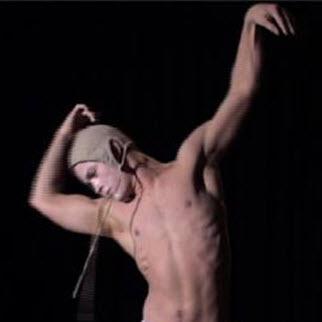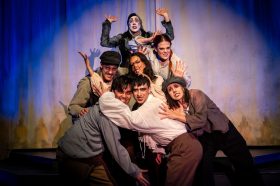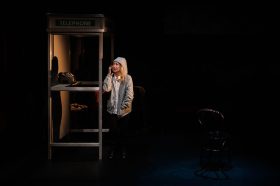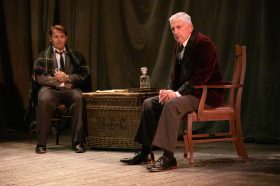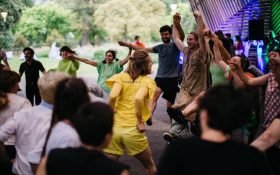The Oracle: Sydney Opera House
Dawn. A new awakening – the creation of the world.
When Diaghliev premiered Nijinsky’s piece to Stravinsky’s music in 1913 at the Theatre des Champs-Élysées in Paris, the scandal of an audience riot made it one of the most internationally well known and most controversial works in dance and music history. After Nijinsky, over the past century several choreographers have grappled with the relentless, pounding rhythms of Stravinsky’s towering score (e.g. Bejart, Macmillan, Massine, Bausch and Prelcolaj). Part of the Spring Dance season at the Sydney Opera House, this new version by Meryl Tankard, one of Australia’s major choreographers, is one of the most dazzling highlights of the dance calendar this year.
It is an extraordinarily demanding, bravura solo for dancer Paul White who is explosive in its powerful, blistering intensity. White shares choreographic credit with Tankard for the work, he is a Helpmann award winner and also an athletics champion .The work opens with a video prologue by Regis Lansic to the Magnificat by Joao Rodrigues Esteves of various images of White, and then White emerges mysteriously from the gloom. Is he a primal creative god or a shaman like figure channelling that energy and driven Cassandra-like to madness and exhaustion? White possibly has a body similar in some ways to Nijinsky’s, strong, fluid, with chunky thighs and an androgynous quality. The suffering, Nijinsky went through is also alluded to throughout the work. At times he moves on high demi pointe in fast footwork with fluid, feminine grace, at others he is far more like Bourne’s vicious, feral, dangerous Swan. There is very little in the way of scenery or props. For part of the performance White, who is mostly just in white underpants, uses a very theatrical dark velvet cape – draped, twisted, rolled, stroked, beaten, turned into a turban or an obscuring mask – sometimes quite ‘Grahamesque’ in its sculptural quality. In another section he wears a rough fringed short kiltlike ‘skirt’.
Visually the work was heavily inspired by the work of Scandinavian painter Odd Nerdrum. His work is used as a backdrop and inspired Lansac’s wonderful kaleidoscopic images in his film. Sometimes they are surrealistic, sci-fi futuristic, at others like Renaissance paintings. They convey a sense of Nerdrum’ s floating, muscular contorted forms as well as Wright’s rapid fire coiled, spring eruptions contrasted with reflective, sculptural and controlled poses. Both grainy black and white and colour film are used. The eerie use of shadow is important in some sections as Wright interacts with his double on screen. The futuristic/sci-fi theme was also continued with Wright Beikng caught in a blinding, cold circle of light like being under a microscope (or a teleporter?) that expanded.
Nerdrum’s work also influenced the inclusion of the cap that White wears at one point in the performance; I also thought possibly this has allusions to childhood and growing up and also perhaps Nijinksy’s famous role in Spectre de la Rose. Other links to Spectre choreographically were, possibly the curled tendril-like arms, especially in the opening section.
The work has incredible impact and the standing ovation at the end was richly deserved.
The Oracle: Sydney Opera House
By: Meryl Tankard’s
16 – 20 September
Season closed
Running time – just on an hour
